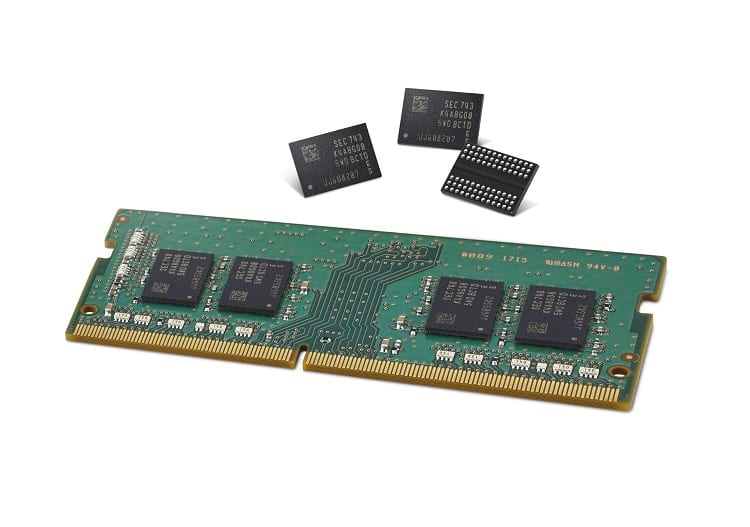Samsung Electronics has announced that it has started the mass production of the industry’s first 2nd-generation of 10-nanometer class (1y-nm), 8-gigabit (GB) DDR4 DRAM. The announcement comes hardly a fortnight after the company announced the mass production of the industry’s first 512-gigabyte (GB) embedded Universal Flash Storage (eUFS).
Samsung claims the new RAM is the most energy-efficiency 8GB DRAM chip available in the market. Coupled with the minimalist dimensions, the new chip is bind to give the highest performance. The 2nd-generation 10nm-class 8GB DDR4 boasts roughly a 30% productivity gain over the company’s previous generation 10nm-class 8GB DDR4, launched in February 2016. The new chip uses an advanced, proprietary circuit design technology, improving the performance levels and energy efficiency by 10-15%. This is once again an innovative technological development from the South Korean giant and Gyoyoung Jin, president of Memory Business at Samsung Electronics, was seemingly ecstatic about it.
“We have broken through a major barrier for DRAM scalability by developing innovative technologies in DRAM circuit design,” he said.

Samsung has already started the mass production of the new chip. The company, however, have no plans to scrap the production of its first generation chips. It’ll continue manufacturing the old chips, while aggressively increasing the production volume of the newer one.
“Through a rapid ramp-up of the 2nd-generation 10nm-class DRAM, we will expand our overall 10nm-class DRAM production more aggressively, in order to accommodate strong market demand and continue to strengthen our business competitiveness,” Mr Jin added.
With all the advancements that Samsung has made in the field of memory chips, the company now plans for much faster introductions of next-generation DRAM chips and systems. The target list includes DDR5, HBM3, LPDDR5 and GDDR6, for use in mobile devices, supercomputers and high-speed graphics cards. Samsung next plans to work in the development of more efficient next-generation computing systems.
Most Popular Tech Stories
Latest News
Majority of Americans think social media firms have too much power, finds survey
Most Americans are wary of social media companies and their role in politics and the future of the country, according to a new survey of U.S. adults. The Pew Research...





















